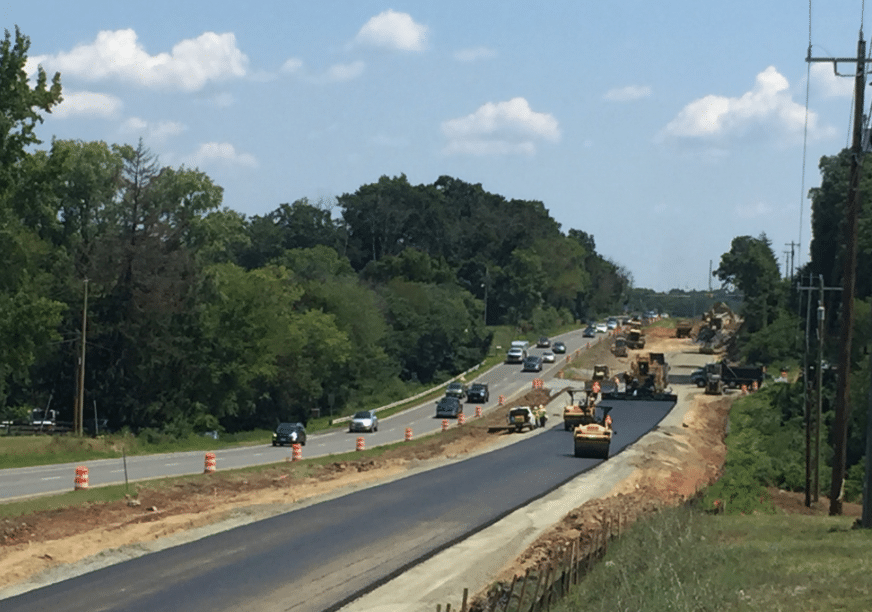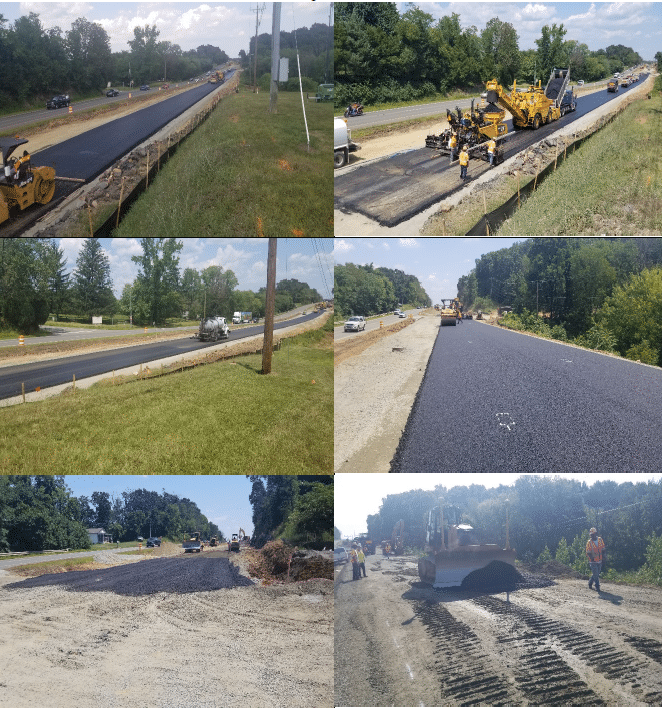Route 29 in Fauquier County, Virginia, is a heavily traveled local, commuter, and truck route carrying 50,000 vehicles per day. Due to the volume of traffic, speed, and lack of visibility, improving sight distance on two successive hills was a priority for the Virginia Department of Transportation (VDOT). Providing better stopping sight distance at the congested intersection of Route 29 at Vint Hill Drive was the key to improving safety.

Nicknamed the “Cut the Hills” project, the US Route 15/29 design-build improvements at Vint Hill included one mile of roadway construction, the removal of 11 feet of diabase rock from the northern hill, and the removal of seven feet of red shale from the southern hill. Volkert served as the lead designer and quality assurance manager for the design-build team with Chemung Contracting as the contractor.
“The challenges of the corridor and location had prevented it from going to procurement for over a decade. The Culpeper District, once given the green light, got the design-build project through procurement in record time,” said Garrett Moore, PE, former VDOT chief engineer (during procurement, design, and construction). “The difficulty of the project made it so that the Chemung/Volkert team was the only bidder. The project would not have been possible without their unique abilities, innovative design, planning, selection, and use of equipment to execute the project on time and within budget.”
Creating a design solution for the short construction schedule
As lead designer, Volkert was tasked with finding the most cost-effective solution within the schedule, which included a VDOT- and stakeholder-approved 26-day road closure. Given site conditions that included both exposed and below-grade rock, the best option involved two approaches to minimizing the hills: blasting and traditional above-grade excavation prior to and after the road closure. While blasting to excavate rock is not a new technology, its use on this project required meticulous planning and timing given the constrained project footprint, adjacent traffic, and the 26-day window of opportunity. The design-build team was on-hand to work seven days a week, 24 hours a day during that time period in order to ensure the schedule was met.
Volkert led the early and extensive coordination of stakeholders and construction activities required for the safe execution of the blasting operation. The explosions were contained with the weight of the existing pavement, combined with rubber mats to capture the rock and plastic sheeting for the dirt and dust. There were 16,000 cubic yards of rock and dirt removed offsite while 4,000 cubic yards were used to level between the hills. Over 5,000 tons of aggregate material, 7,800 tons of asphalt, and 4,000 cubic yards of select material were placed.
“This was done by working closely together with the owner—VDOT—as one well-oiled team,” said Moore. “Maintenance of traffic changes were seamless and effectively communicated. It was sequenced, choreographed, executed, and supervised, often around the clock, so there was no wasted effort and no wasted motion to achieve the highest production possible.”
Volkert’s design services also included the development of the roadway design and survey verification; acquisition of the necessary environmental permits; coordination, relocation, addition, and adjustment of utilities; traffic engineering including traffic management plans, with the maintenance of traffic and detour plans; and storm drainage. Volkert also provided design quality assurance and quality control, construction quality assurance, stakeholder coordination, and public involvement services.
Securing the project’s goal of improving safety
The project’s goal was to improve safety, and therefore the health and welfare of the public. This was achieved by altering the terrain and roadway alignment that obscured sight distances from each angle of the approach on Route 29 to the existing traffic signal at Vint Hill Road. The long-term benefit contributing to the health and welfare of the public is evident in the projected reduction in the amount of time spent in traffic-incident-related congestion, and, of course, in the reduction of vehicular accidents.

Effective stakeholder coordination was critical to on-time delivery, including early coordination of environmental permits and early communication with the utility companies.
“The flawless execution of construction increased public support as the citizens, through observations during their daily travels and commutes, gained confidence in the demonstrated professionalism of the design-construction team as they worked. It is rare that the public is in awe of the construction around them. It is even rarer when they are being significantly inconvenienced that they can see first-hand and appreciate how the team is minimizing the inconvenience,” said Moore.
The design-build project was successfully delivered on an accelerated 24-week schedule with project acceptance on September 27, 2019—three days ahead of the approved 26-day road closure.
With the successful completion of Phase I, VDOT reached out to Volkert to design intersection improvements for the Vint Hill Road at Route 29 intersection. Through standard delivery methods, Volkert is once again teaming with VDOT to enhance this important intersection with upgraded signal plans and the addition of new turn lanes. Plans are currently underway with construction slated to begin in late 2021.

